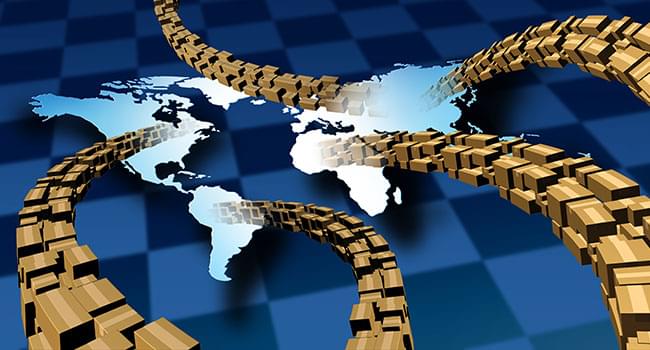As world economic activity rebounds sharply from the recession and pandemic control measures are gradually being eased, emerging and developing economies are showing the highest growth in output and packaging sales during 2021. A new study from Smithers,
The Future of Global Packaging to 2026, delves into these global trends as well as detailing the new and evolving technologies that are driving growth in packaging markets through 2026.
World packaging sales at current prices increased from $844,231 million in 2016 to $953,972 million in 2019, which represents an average annual growth rate of 4.2%. For 2020, world packaging sales at current prices) grew by 1.5% to $967,865 million and are projected to grow 4.8% to $1,014,076 million in 2021 (at constant 2020 prices and exchange rates). World packaging sales are forecast to grow during 2021-26 at an annual average rate of 3.9% to $1,228,483 million (at constant 2020 prices an exchange rates).
Regional players
Asia is the largest packaging market accounting for 42.9% of world packaging sales in 2020. North America is in second place accounting for 22.9% of world packaging sales, ahead of Western Europe with 18.7%. The emerging and developing regions of Eastern Europe, South & Central America, the Middle East and Africa each account for a relatively small share of packaging sales at present.
The developing and emerging countries of Africa, Asia and Eastern Europe are forecast to grow packaging sales faster than the world market average rate over the five-year period to 2026. Urbanisation, rising real incomes and the development of a more sophisticated logistics and retail infrastructure drive packaging demand.
North America, Western Europe and Australasia are forecast to grow packaging sales at relatively low rates. Here, packaging markets are mature and saturated with high penetration rates across end use sectors.
China is the world’s largest packaging consumer with sales of $237,236 million in 2020, followed by the US with sales of $190,071. In US dollar terms, India and China registered the biggest gains in packaging sales during 2016-19 out of the top ten countries. Japan, the UK and US registered the slowest rise in packaging sales during the same period. China and India are forecast to record the fastest growth in packaging sales during 2021-26, of the top ten countries.
Packaging material consumption
Board is the largest packaging material accounting for 33.1% of world packaging sales in 2020, followed by flexible packaging with 24.7%, rigid plastics with 20.6% and metal with 12.0%. Glass packaging accounts for 4.1% and other packaging 5.5% of world consumption.
Board is forecast to grow sales at the fastest rate, followed by flexible plastics and rigid plastics. Glass, metal, other packaging and flexible paper are forecast to grow at lower rates than the overall world packaging market rate. Flexible foil consumption is forecast to decline.
Dominance of flexible plastic packaging
Flexible plastic is by far the largest product type within flexible packaging, followed by flexible paper and flexible foil. Flexible plastic packaging sales are forecast to grow during 2021-26 at the fastest rate. Flexible paper sales are forecast to grow at a very slow rate while flexible foil is forecast to decline.
Flexible packaging is replacing traditional materials such as glass jars and metal cans for various applications. Retort stand-up pouches, for example, are challenging rigid pack formats such as metal tins and glass jars for a wide range of food products. Flexible packaging compares favourably with rigid pack formats. Flexible packaging is often lower in cost, has a much lower pack weight and offers freight cost savings. Flexible packaging film can also provide barrier protection for extended product shelf life.
Flexible packaging faces several key challenges. Consumption is being hit by slower growth in several key end-use markets, such as confectionery, snack food and dairy and a longer-term decline in cigarettes and tobacco sales, especially in the advanced countries of Western Europe and North America. There is also a commitment by brand owners and retail chains aimed at phasing out non-recyclable and difficult to recycle multilayer and multi-material flexible packaging films in favour of more sustainable and recyclable alternatives such as mono-material film or paper packaging due to the growing public backlash against single-use plastic packaging and excessive packaging.
Sustainable packaging
Growth of sustainable packaging her key trend with implications for the rigid plastic packaging industry. Brand owners and retailers are responding to consumers’ demand for more sustainable packaging in order to reduce the environmental impact of packaging in several ways. These include package light-weighting by reducing material usage without impairing pack performance, using recycled plastics, and the adoption of bioplastic packaging. There is also a trend to switch from plastics to alterative packaging materials, where technically feasible.
Find out more
